- Established 1982 -HOME: www.hiltonpond.org
THIS WEEK at HILTON POND Subscribe for free to our award-winning nature newsletter (Back to Preceding Week; on to Next Week) |
All text, maps, charts & photos © Hilton Pond Center A SPECIAL SHADE OF BLUE As we have for the past sixteen years, in late April we departed Hilton Pond Center for a five-hour drive north to one of our favorite places--Fayette County WV--for the New River Birding and Nature Festival (newly redesigned logo above, with a pinwheel of six eastern warblers). Established to entice visitors to the New River Gorge before white water rafting season begins, the festival annually hosts more than a hundred birders and nature lovers in a region noted for its vast diversity of flora and fauna.
All text, maps, charts & photos © Hilton Pond Center The Gorge itself was formed by the meandering New River (under blue skies, above), which for millions of years has carved deep channels into the heavily forested Appalachian Mountains. The river starts near Boone NC and flows northward--rather unusual for a tributary in the northern hemisphere--passing through Virginia and West Virginia before merging with the Gauley River. From there its waters mix with the Kanawha and then the Ohio, ending up in the mighty Mississippi River before entering the Gulf of Mexico.
All text, maps, charts & photos © Hilton Pond Center As prelude to the Festival, a couple of dozen participants--many of whom are faithful repeaters--gathered on Sunday evening for a fundraising dinner, proceeds of which support the Leadership Fayette County (WV) program now administered by Geoff Heeter. This long-running enrichment program established by Festival founder Dave Pollard is offered to a select number of local high school students who are encouraged to go off to college and return to their roots for the benefit of Fayette County citizens. After dinner, attendees held up color copies of "Flat William" (above), a child's drawing of the late Bill Thompson III, editor of Bird Watcher's Digest. All text, maps, charts & photos © Hilton Pond Center
All text, maps, charts & photos © Hilton Pond Center The Festival really got underway on Monday morning with its traditional "Birding by Butt." Rather than taking buses and cars to some distant birding spot, for opening day
All text, maps, charts & photos © Hilton Pond Center Although we depart Hilton Pond with the assignment of guiding and lecturing at the New River Birding and Nature Festival, our first task at Opossum Creek was to give folks an introduction to bird banding. For many participants our teaching-learning sessions are the first time to observe up-close birds such as the adult female Brown Thrasher above. The view was so close everyone could see a thin red rim around the bird's otherwise yellow iris.
All text, maps, charts & photos © Hilton Pond Center Banding on that first morning was particularly productive. In addition to the Brown Thrasher we mist netted, banded, and released three adult Ruby-throated Hummingbirds (two males and a rather early female), a male Common Yellowthroat, two male Hooded Warblers, an Ovenbird, a White-throated Sparrow, a surprising SIX female Ruby-crowned Kinglets, and two Black-and-white Warblers (male, above right, and female together in the net for a nice plumage comparison). The sparrow and kinglets likely spent the winter at or near Opossum Creek, while the others had just arrived from wintering grounds to the south.
All text, maps, charts & photos © Hilton Pond Center It's always fun to band new birds, but this year on the first day we also caught three birds we'd banded at past Festivals. Two were male Wood Thrushes (above) already in breeding condition, and both were captured last year on 25 April. These thrushes had to have been true migrants that left the area last fall, spent the winter in the Neotropics, and returned to the very same site seven months later. Equally remarkable, however, was a probable permanent resident male Northern Cardinal we banded at Opossum Creek on 27 April 2015. We had not seen him again prior to recapture this year as an after-fifth-year bird!
All text, maps, charts & photos © Hilton Pond Center After Birding by Butt was over, we opened mist nets and operated our hummingbird trap several days during the week for additional education and research. One of these was a female Carolina Chickadee with a well-developed brood patch (above), an expanse of bare belly skin that was a sure sign she had been or was going to be sitting on eggs or chicks. In fact, the large bulge just anterior to her cloaca appeared to be an egg in her reproductive tract that was just waiting for the shell gland to lay down a shell! (We banded and released the chickadee in short order so she could get right back to her nest--undoubtedly in a tree cavity in nearby woods.) Some of our other avian captures--including an unusual bird in that special shade of blue--are described later in this account. We're grateful for the assistance of bander Keith Richardson in erecting his nets for us at Opossum Creek. Thanks also to Keith, Geoff Heeter, Rachel Davis, and Paul Shaw for their productive year-round organizational efforts for the New River Birding and Nature Festival. (We likewise appreciate Mary Kimberly and Gavin MacDonald for helping monitor and extract birds from nets during the week.)
All text, maps, charts & photos © Hilton Pond Center Tuesday through Saturday Festival participants gathered at Burnwood, a National Park Service group campground, for a hot breakfast. By 7 a.m. all were on buses or in carpools headed for destinations where birds and other natural wonders were waiting to be seen. One field trip we guided went deep down into the gorge to Fayette Station, retracing the twisting route used by motorists before the famous New River Gorge Bridge (above) was built in 1977. When area coal mining was in its prime in 1905, between Fayette Station and Thurmond (15 miles up river) there were 13 towns populated by miners, railroad men, and their families. Today there are few remaining signs of the mining industry and the Gorge is once again filled with trees. Well, no signs except for 100-car trains that regularly rumble through carrying coal from other locales. When that sound died down, there were ample opportunities to watch and listen to Indigo Buntings, Carolina Wrens, Northern Cardinals, and other birdlife--right under the New River Gorge Bridge!
All text, maps, charts & photos © Hilton Pond Center Things were a little slow that first morning in the field his year--after all, it WAS still April--and many spring migrants had not yet returned. Nonetheless, our group marveled at sun-lit iridescent plumage of a male Common Grackle (above), perched in an American Sycamore, a tree whose leaves were just coming out and from whose twigs old seed balls still dangled.
When The New River Birding and Nature Festival was established 17 years ago, "and Nature" wasn't part of its name. Soon thereafter, the founders shifted from being just a birding event to one in which the whole ecosystem of the Eastern Appalachians is of interest. Thus, on any given field trip these days you're just as likely to hear guides talking about Pipevine Swallowtails (above) and their Dutchman Pipe hosts as about some colorful spring migrant songbird. Even the birding is different than at most nature festivals, with guides encouraging everyone to be a true birdwatcher instead of "just a birder" who ticks off species on a life list. We spend a lot of time observing bird behavior at each New River event, carefully pointing out relationships among birds, their habitats, and other faunal species.
All text, maps, charts & photos © Hilton Pond Center As a result, between avian observations many Festival participants rest their "warbler necks" and gaze downward instead, reveling in the abundant plant life of the Appalachian woods. Jack-in-the-Pulpit, Arisaema triphyllum, is always a favorite, whether it be the green form or the one with purplish-brown stripes on the spathe (as above). "Jack" is the spadix, a club-shaped structure covered by both male and female flowers. Younger plants have more male flowers, while established ones several years old are mostly female and more likely to bear red berries. Pollination is by fungus gnats attracted to the flowers' earthy odor.
All text, maps, charts & photos © Hilton Pond Center More common along the trails this year was an arching herbaceous plant with broad, alternating parallel-veined leaves. Some folks quickly call this plant a Solomon's Seal, Polygonatum spp., but in those species flowers dangle beneath the stem, hidden by very similar leaves. Since the plant above has flowers in a cluster at the tip of the stem, it actually is False Solomon's Seal, Maianthemum racemosum (formerly Smilacina racemosa). In our photo the yellow-tinged flowers are just opening and will turn snowy white. A member of the Lily Family (Liliaceae), False Solomon Seal is pollinated by beetles, flies, and small native bees whose work results in clusters of small, succulent red berries.
All text, maps, charts & photos © Hilton Pond Center Although they superficially resemble tall, often-cultivated "German Irises" in shape and color, native wild irises of West Virginia--including Iris virginica (above)--typically grow only to a foot or so in height and sometimes carpet the forest floor in appropriate moist habitats. This species, also called Southern Blue Flag, is pollinated primarily by bees directed toward the nectar source by stripes and a large white and yellow signal; these marks are called "bee guides" for obvious reasons. An interesting historical factoid: Symbol of the royal families of France, the Fleur-de-lis ("flower of the lily," even though irises aren't in the Lily Family) is a stylized representation of the iris flower.
All text, maps, charts & photos © Hilton Pond Center We like to remind folks on our West Virginia field trips that hardwood trees are also "wildflowers," as shown above by blossoms of White Sassafras, Sassafras albidum, hanging beneath newly opened green leaves. This native understory species is dioecious, with male and female flowers on separate trees--a mechanism that apparently prevents self-pollination and allows greater intraspecies diversity. Male flowers (above) are larger and somewhat showier, accommodating nine pollen-bearing stamens; the smaller female flower has a single three-parted pistil. Wild sassafras is notable for its aromatic sap used to flavor drinks, and for having three distinct leaf shapes: One or two lobes, or unlobed. (Two shapes are visible in our photo.) The tree is pollinated by small native bees and a wide variety of flies that facilitate production of blue drupes that are disseminated by birds. Caterpillars of Spicebush Swallowtail and Tiger Swallowtail butterflies are known to browse on sassafras leaves.
All text, maps, charts & photos © Hilton Pond Center One of our field trips ended up at Canyon Rim Visitor Center, which adjoins the New River Gorge Bridge and is part of the New River Gorge National River (National Park Service). The facility has a marvelous staired boardwalk that descends into the Gorge and provides excellent views of birds, flora, and even an occasional small mammal. We were pleased this year to see a couple of American Red Squirrels, Tamiasciurus hudsonicus (above), going in and out of a probable nest hole in an old oak. In many parts of West Virginia they're called "fairydiddles," a word of unknown origin. Unlike larger Eastern Gray Squirrels, Sciurus carolinensis, these chestnut-colored tree rodents are notoriously solitary except during mating season. One diagnostic feature of the species is its white eye-ring.
All text, maps, charts & photos © Hilton Pond Center Other field trips during the 2019 Festival went to places like a re-claimed strip mine, assorted riparian sites, and the Canada-like mountaintop bog at Cranberry Glades. One of the excursions we helped lead started with fleeting, not-photographable encounters with Swainson's Warblers within Babcock State Park, where cultural resources include an old grist mill (above).
All text, maps, charts & photos © Hilton Pond Center Nesting in stream-side boulder crevices just below the mill were a few pairs of more cooperative Northern Rough-winged Swallows (above). This non-iridescent species is semi-colonial and often occupies past residences of Bank Swallows and Belted Kingfishers when not nesting in cavities within old walls and bridges.
All text, maps, charts & photos © Hilton Pond Center Later in, a railing along a big lake upstream from the old mill offered an unusual look at a Spotted Sandpiper (above). True to form, the little bird walked swiftly along the railing, bobbing its tail as it went from one end to the other before fluttering to the adjacent lakeshore. Note the sandpiper's hallux (hind toe) is higher up on the tibiotarsus, perhaps an adaptation that keeps it from getting entangled in aquatic vegetation.
All text, maps, charts & photos © Hilton Pond Center Lunch at Babcock State Park occurred near a large grassy lawn surrounded by huge Norway Spruces. A few species seem to love these tall trees--especially Blackburnian Warblers that tend to stay high in the canopy. Using an audiolure, guide Jeffrey Gordon was able to entice one of these brightly colored songsters down nearly to ground level (male, above), where the bird nearly landed on Mr. Gordon's head--just another magical occurrence at the annual New River Birding and Nature Festival.
All text, maps, charts & photos © Hilton Pond Center Growing on the actual substrate near our picnic spot we found an unusual organism that, at first glance, might appear to be a fungus (see above). Usually called by its politically incorrect name of Squawroot, Conopholis americana, this was actually a flowering plant that no longer has chlorophyll or photosynthetic properties; it gets its nourishment by parasitizing roots of Red Oaks. Sometime referred to as Bear Cone or Cancer Root, the plant resembles an ear of corn, with each scaly "kernel" giving rise to a flower. Pollinated by native bees, each successful blossom yields an autumn seed that falls to the ground and produces not an epicotyl leaf but a hypocotyl root that, in turn, burrows into the root of the host tree. There the plant steals nutrients until spring of its fourth year, when at last it sends up the above-ground reproductive structure in our photo.
All text, maps, charts & photos © Hilton Pond Center As we headed home from Babcock State Park we took a little detour that first brought us to a small mountaintop pond crowded with old leaves and stems of Common Cattail, Typha latifolia (above). And, as might be expected in such a habitat, we also encountered numerous male Red-winged Blackbirds calling and displaying for the attention of females that were present in much smaller numbers. Females (and young males) in this species look nothing like the adult males; instead, they resemble sparrows on steroids.
All text, maps, charts & photos © Hilton Pond Center From the cattail pond we followed a trail under blue skies to a grassy knoll known to Festival participants as "The Bobolink Field." As our group paraded up the trail, above and around us we could hear songs of male Bobolinks, defending territories where their eventual mates would incubate eggs in nests right down in the grass. The Bobolink song--often given in flight--is mesmerizing, a gurgling chatter that lasts for up to four seconds as it rambles from high notes to low. Males also give calls described as see-yaw, chunk, and chenk, while females respond with chunks of their own. Interestingly, when area birders discovered this Bobolink haven on private property, they alerted the farmer who gave up his spring haying season every year so as not to disturb these ground-nesting birds. That's quite an investment in bird conservation; would that all birders and nature lovers put their money where their mouths are.
All text, maps, charts & photos © Hilton Pond Center When we opened nets mid-week at Opossum Creek we caught a variety of birds including: One each of Eastern Phoebe, Ovenbird, Wood Thrush, and White-throated Sparrow, plus two more male Ruby-throated Hummingbirds and a couple of Gray Catbirds (above). These birds were all of interest to Festival participants, but one catch on the afternoon of 2 May proved to be especially noteworthy.
All text, maps, charts & photos © Hilton Pond Center Things started that day with a couple of similar-looking Blue-headed (Solitary) Vireos (above) hitting the net. They comprised an apparent breeding pair, the male with a cloacal protuberance and the female with a prominent brood patch.
All text, maps, charts & photos © Hilton Pond Center Shortly thereafter we saw a male Hooded Warbler (above) hit the net, followed by a Red-eyed Vireo. While we were banding these birds one of the Festival guides cried out that a male Cerulean Warbler was singing above a powerline cut beyond one of the cabins at Opossum Creek--directly above one of our mist net lanes! As might be expected, this announcement got everyone's attention. As we continued our work at the banding table, we suggested that guide Jim Rapp try an old trick we perfected while studying Blue Jays during grad school days: Place an audiolure playing the Cerulean Warbler song directly under the mist net in the hope it would draw down the singer. Jim was happy to oblige and put his device on continuous loop, after which we could hear both the live bird and the recording.
All text, maps, charts & photos © Hilton Pond Center At that same time, Festival guide Mark Garland was walking up the road behind the cabin where we were banding, unaware of our scheme. He heard the two Cerulean Warbler songs and hurried to the net lane, independently thinking he could play his own audiolure to attract the live bird to our net. Mark approached, turned on his playback machine, and a few seconds later the warbler dived down, hit the net, and was in Mr. Garland's gentle, capable grip. Mark happily passed the bird to us at that point, and we had in our hands the first Cerulean Warbler we'd ever held--one of only a half-dozen we had ever even seen. Cerulean Warblers are one of the main "target species" for attendees of the New River Birding and Nature Festival; i.e., it's a bird many folks say they most want to see when the come to West Virginia. Needless to say, quite a crowd began gathering around the banding table as we examined this latest capture.
All text, maps, charts & photos © Hilton Pond Center Based upon overall plumage the bird was obviously a male, with head, back, and rump feathers a color that is accurately called "cerulean"--from the Latin word for "sky blue." (Females are bluish-green above with a pale yellowish belly and prominent white "eyebrow.") This is certainly what we would call a "special shade of blue."
All text, maps, charts & photos © Hilton Pond Center Determining the bird's age was a little harder and not something easily done without having it in-hand. The faded alular feathers and primary wing coverts (above and below) indicated it was a second-year bird that hatched in 2018.
All text, maps, charts & photos © Hilton Pond Center Also noticeable in the photo above (and several others) is a partially white superciliary line (stripe above the eye). In older male Cerulean Warblers, this is entirely blue. Tips of the lesser and greater secondary coverts are white, giving rise to two "wing bars" when the wing is folded.
All text, maps, charts & photos © Hilton Pond Center Somewhat confusing were the broad rectrices (above) that were more typical of an older bird, even though these feathers were pointed and worn like those found in younger individuals. The rectrices also had a lot of white--something that increases with age in numerous warbler species that have "tail spots."
All text, maps, charts & photos © Hilton Pond Center One final ageing characteristic has been noted by our Operation RubyThroat collaborator Ernesto M. Carman, who has been studying Cerulean Warblers at what may be their most important migration stopover in his home country of Costa Rica. ('Nesto often guides at the Festival but wasn't able to make it this year.) He suspects young warblers of many species have lower mandibles that are dark only at their tips, while in older individuals darker pigment extends further toward the base. The cerulean we caught (above and below) did seem to have limited mandible pigment. (Note the dark band across this male's upper breast; this mark becomes more blue in older Cerulean Warblers.)
All text, maps, charts & photos © Hilton Pond Center After careful consideration and a little head-scratching, we finally concluded the Cerulean Warbler we caught and banded was indeed a second-year bird hatched in North America in 2018. (Our conclusion was verified by a couple of Cerulean Warbler experts we contacted after the Festival was over.)
All text, maps, charts & photos © Hilton Pond Center In addition to numerous hand-held photographs (above), we took careful measurements of our blue warbler's mass (10.0 grams--about the weight of two U.S. nickels), his tail length (43mm), and his wing chord (65mm); made a few notes about his plumage; and observed he had a cloacal protuberance indicating he was ready to mate. And then we had one more thing to do.
All text, maps, charts & photos © Hilton Pond Center Watching over the banding table during our entire processing of this rare Cerulean Warbler was none other than the effervescent Katie Fallon (above), who comes to the Festival each year to speak and sometimes guide. Katie just happens to be author of Cerulean Blues: A Personal Search for a Vanishing Songbird published in 2011 by Ruka Press. (Available through Amazon in paperback and Kindle editions.) In her book Katie . . .
All text, maps, charts & photos © Hilton Pond Center After posing with the Cerulean Warbler AND Katie AND her book, we thought it would be appropriate for the author to release our banded blue bird. Alas, just as we got ready to pass the cerulean to Katie he escaped our grasp and flew to a nearby branch (above). There he spent several minutes straightening his plumage and posing while quite a few folks got to photograph him and admire his new aluminum bracelet. Then he flew straight back to the power line cut whence he originally came. By then, supper was 20 minutes late, but apparently no one cared after an exciting opportunity to have such close contact with a seldom-seen and increasingly rare Neotropical migrant. NOTE: At the Festival we make minimal and judicious use of recorded bird songs when in the field, ever aware that too much intrusion into a breeding bird's habitat might cause excessive anxiety at an important time of the year. We're happy to report that the day after he was banded the Cerulean Warbler at Opossum Creek was back on territory and singing away, undoubtedly trying to deter other males and trying to attract a female. We would not be surprised of he and an eventual mate bred this year right at Opossum Creek.
All text, maps, charts & photos © Hilton Pond Center Aside from field trips and our banding work, we would be remiss if we did not mention two other aspects of the New River Birding and Nature Festival that delight and inform participants. Every afternoon during the week there is an informal "Popcorn Talk" by a Festival guide or other individual, and each evening a general meeting is followed by a presentation from an equally knowledgeable expert. (Sometimes there's even a quiz or a "Bird Bingo" game!) Among this year's popcorn speakers were Christina Baal (above), an up-and-coming wildlife artist whose goal is "Drawing 10,000 Birds" from around the world.
All text, maps, charts & photos © Hilton Pond Center Driving down from Morgantown this year was Dr. Jesse Fallon (above), a vet who specializes in wild animal rehabilitation. Along with wife Katie--the Cerulean Warbler author--Jesse presented and talked about several unreleasable birds they use for educational purposes at Avian Conservation Center of Appalachia. One bird on-the-fist was Tundra, an adult female Peregrine Falcon that came to the rehab center with a broken bill. She wore a custom-made prosthetic for several months until the bill re-grew but is still unreleasable because of wing tendon damage that apparently occurred at the same time the bill was broken.
All text, maps, charts & photos © Hilton Pond Center Our final field trip of the week went to Wolf Creek Park, a mixed-use 1,000-acre project that intertwines a nature preserve and trails with moderate residential and commercial development. This project was originally overseen by Festival founder Dave Pollard, who with other Fayette County visionaries understood a business park can be something more than just buildings. As such, Wolf Creek Park is a splendid place with an unlimited future. Of particular interest to Festival-goers is a Wetlands Boardwalk (above) we designed and helped build with diverse volunteer crews. This boardwalk allows access to a small 15-acre wetland created perhaps 40 years ago by industrious American Beavers; it represents a flat, watery habitat very rare in the steep mountains of West Virginia. We've been been running mist nets in the wetlands for a decade or so and set them up again this year with the help of local master bander Allen Waldron. Field trip participants (above) wandered the boardwalk and adjacent woodlands while we banders captured birds to show the group.
All text, maps, charts & photos © Hilton Pond Center Since there was a constant din of White-eyed Vireos singing in the wetlands we weren't surprised to catch a male of this species. Other captures included Gray Catbird, male Northern Cardinal, White-throated Sparrow, and Brown Thrasher--all males with sperm-bearing cloacal protuberances. The most brightly colored bird of the day was a male Chestnut-sided Warbler (above) with distinctive yellow crown, yellowish wing bars, and rusty-colored flanks. The Wolf Creek Wetlands--with a mix of shrubs and open and closed forest--are an optimal breeding site for this Neotropical migrant.
All text, maps, charts & photos © Hilton Pond Center Although Rosebay Rhododendron, Rhododendron maximum, is the state flower of West Virginia, this magnificent shrub doesn't flower until mid-summer--long after participants in the New River Birding and Nature Festival have departed Fayette County and Opossum Creek Retreat. Nonetheless, closely related Catawba Rhododendrons, R. catawbiense (above)--both wild and cultivated--can be found in full flower. Some attendees even tell us they are so enamored of the Mountain State after their Festival experience that they have planted rhododendrons back home as a reminder of a week well-spent with birds, nature, and fellow enthusiasts in Wild, Wonderful West Virginia. Perhaps we should plant a few here at Hilton Pond Center. See you at the 18th Festival next year? All text, maps, charts & photos © Hilton Pond Center
Checks also can be sent to Hilton Pond Center at: All contributions are tax-deductible on your Don't forget to scroll down for Nature Notes & Photos, |
|---|
|
"This Week at Hilton Pond" is written and photographed by Bill Hilton Jr., executive director of Hilton Pond Center for Piedmont Natural History
|
|
|
Please refer "This Week at Hilton Pond" to others by clicking on this button: |
|

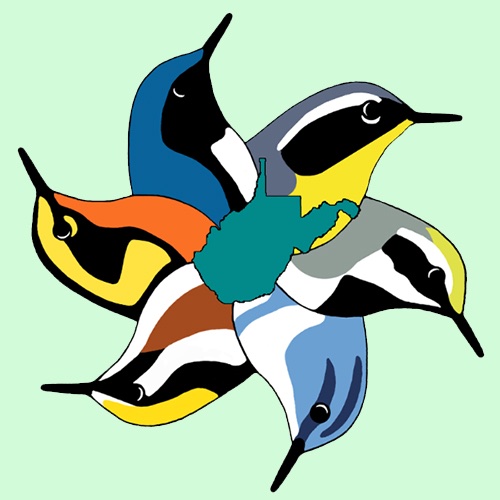
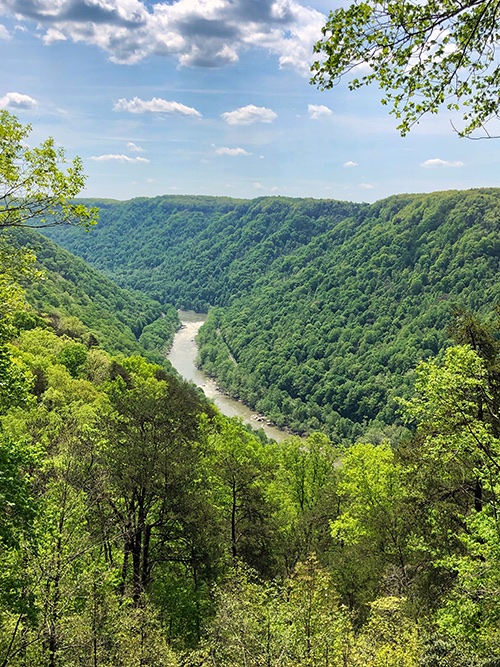
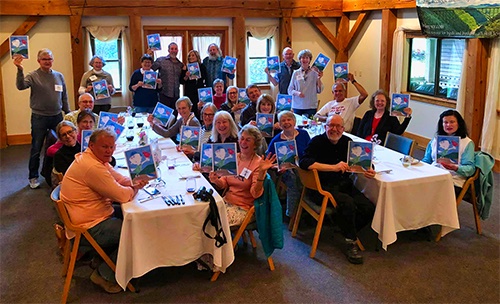
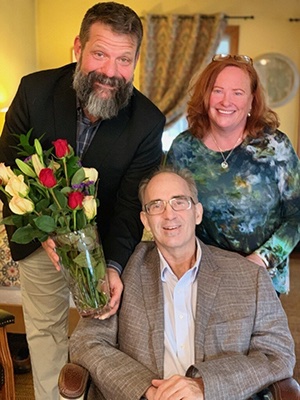 Bill, who passed away a few weeks previous, was a long-time enthusiast of and guide for the Festival; he expressed his heartfelt wish that Leadership Fayette County should be one of four beneficiaries of any financial gifts given in his memory. Bill's absence was felt throughout the Festival by everyone who had been in the field with him during past years in the Mountain State, or elsewhere. Later in the week he was recognized posthumously for receiving the American Birding Association's "Roger Tory Peterson Award for Promoting the Cause of Birding."
Bill, who passed away a few weeks previous, was a long-time enthusiast of and guide for the Festival; he expressed his heartfelt wish that Leadership Fayette County should be one of four beneficiaries of any financial gifts given in his memory. Bill's absence was felt throughout the Festival by everyone who had been in the field with him during past years in the Mountain State, or elsewhere. Later in the week he was recognized posthumously for receiving the American Birding Association's "Roger Tory Peterson Award for Promoting the Cause of Birding." 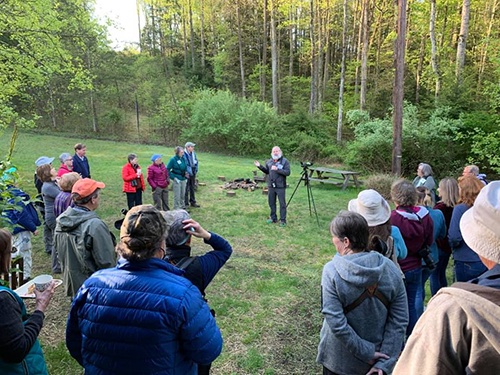
 folks hung around
folks hung around 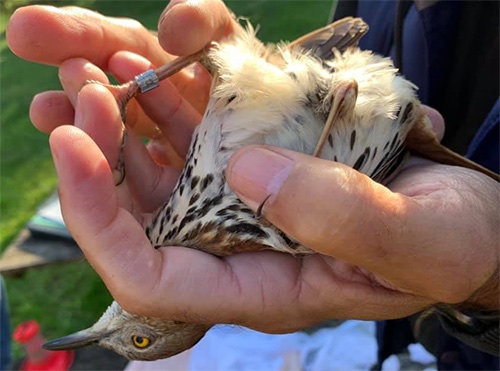
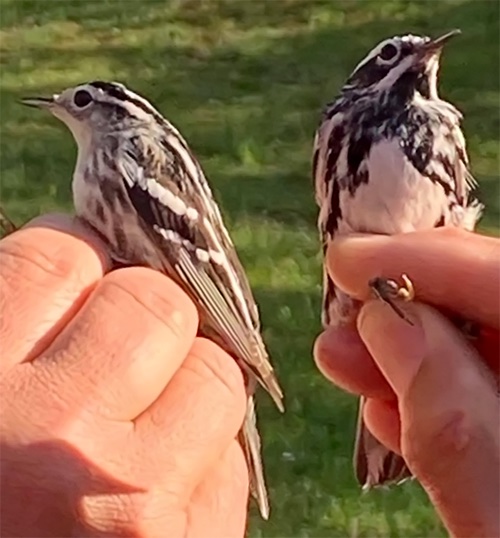


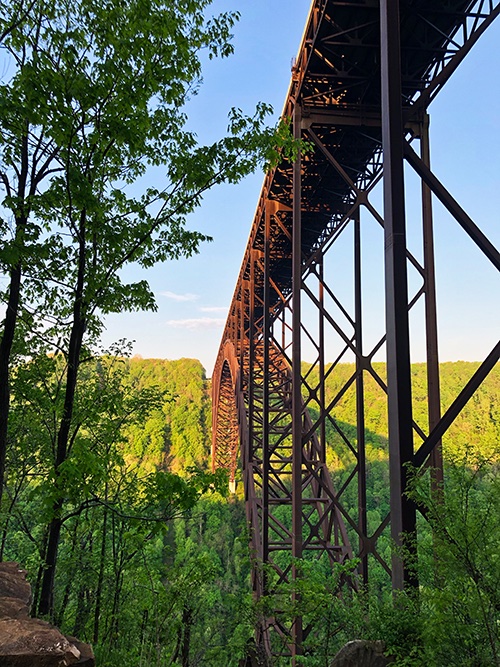

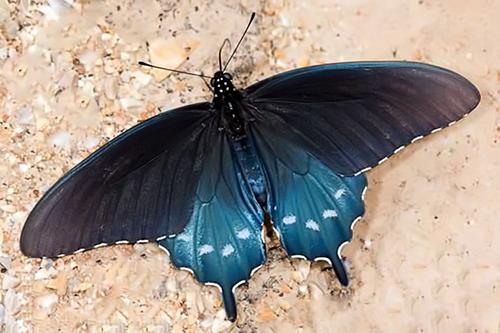
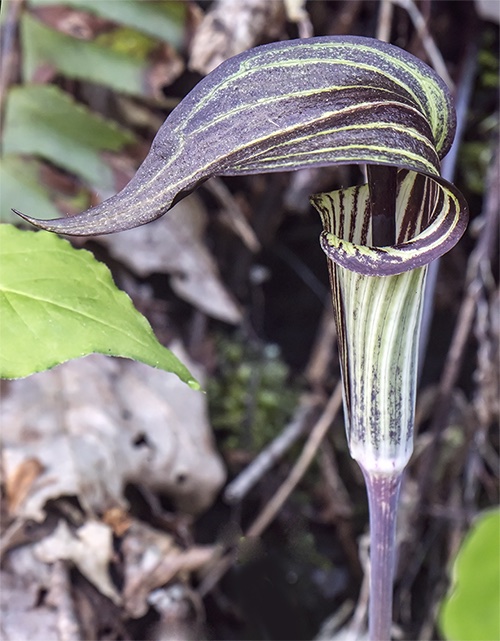

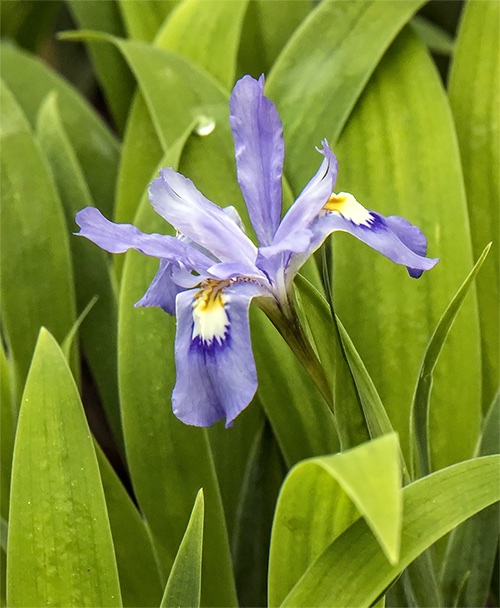
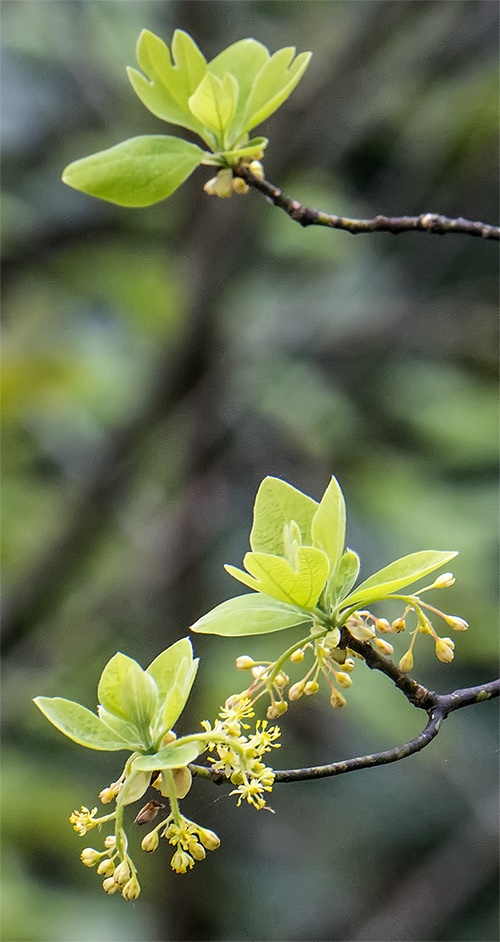
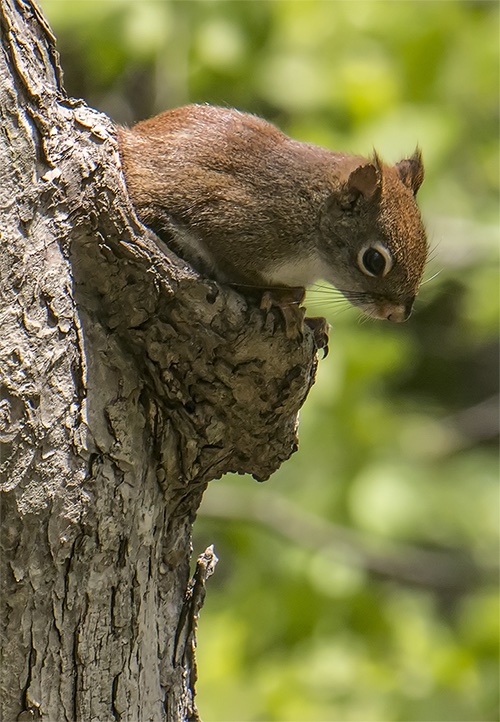

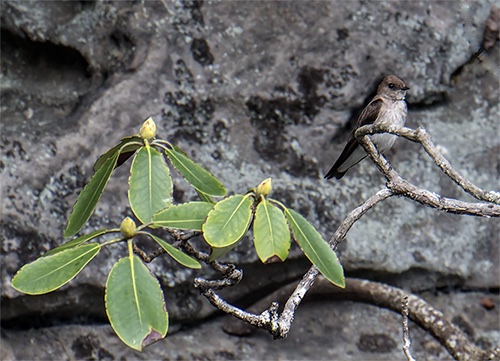

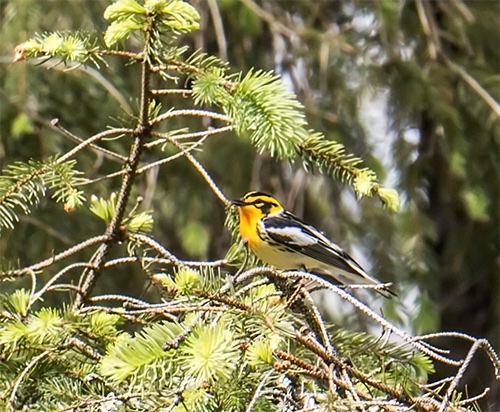

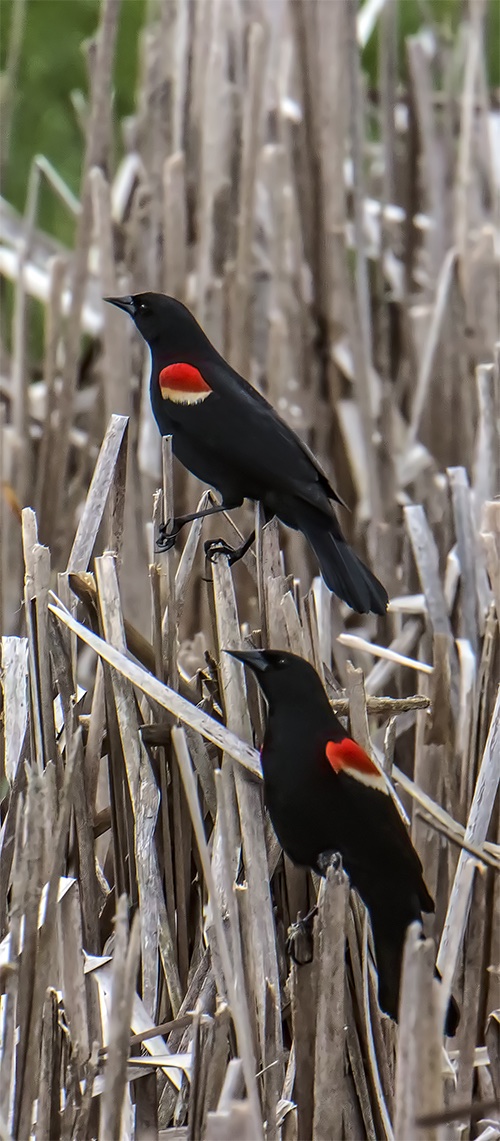
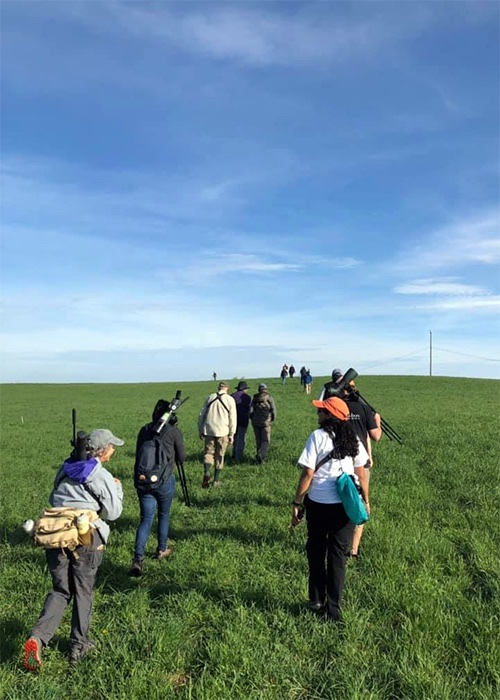


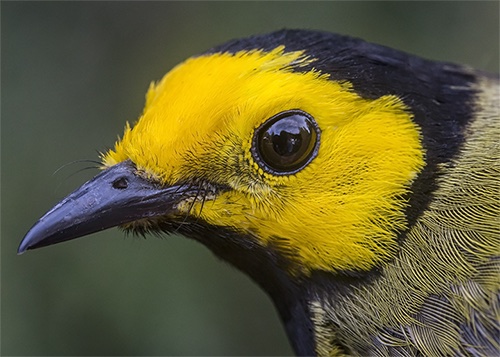

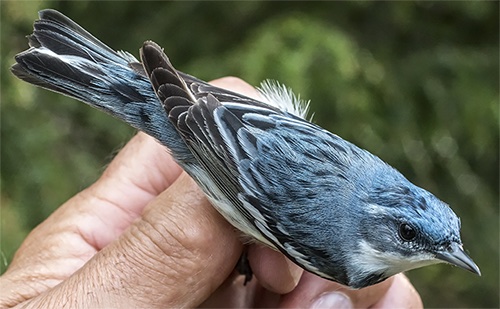
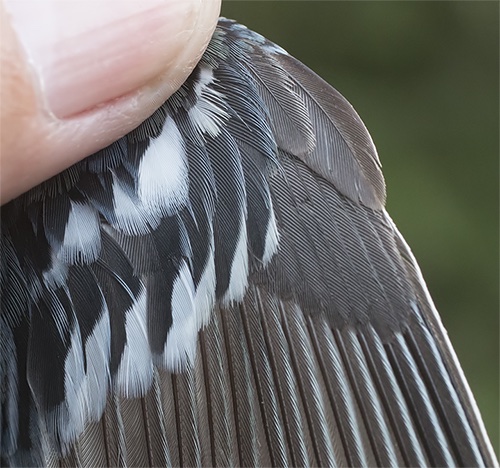
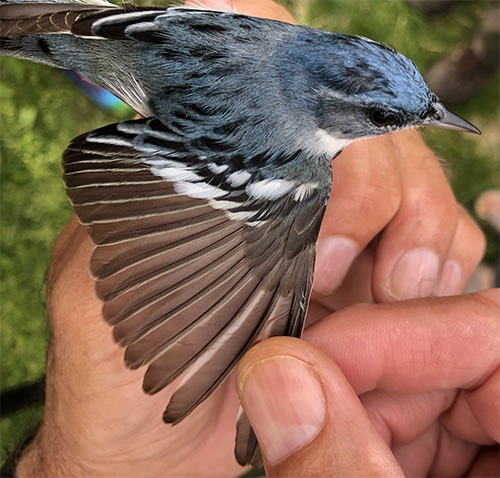
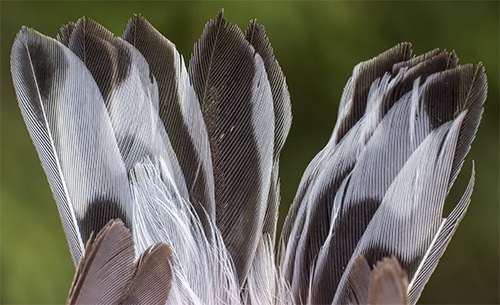
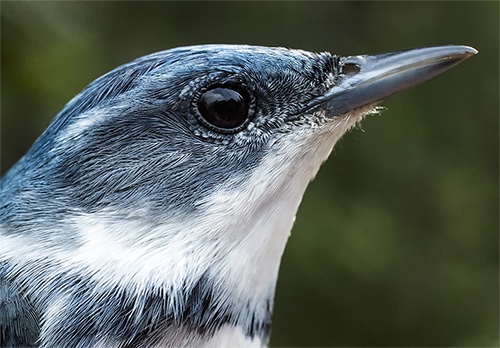
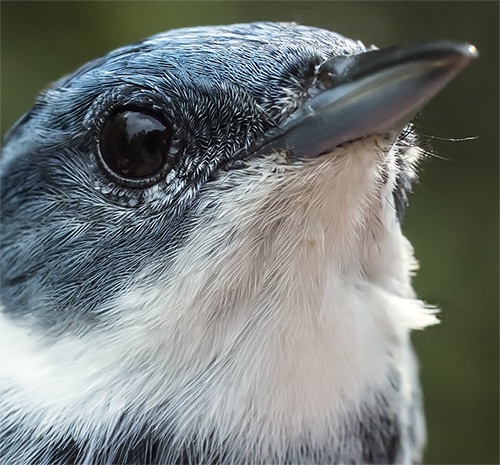

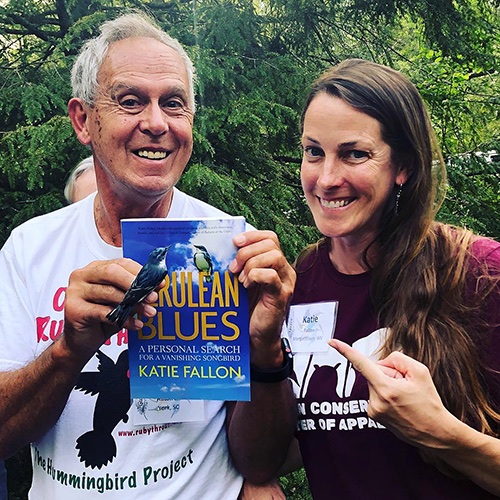
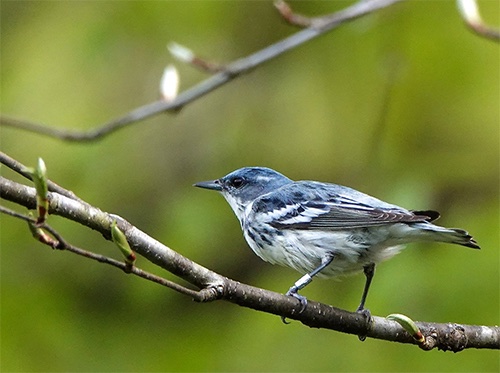

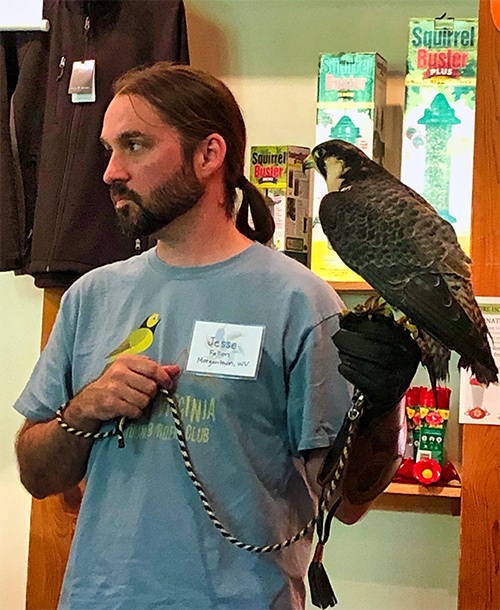
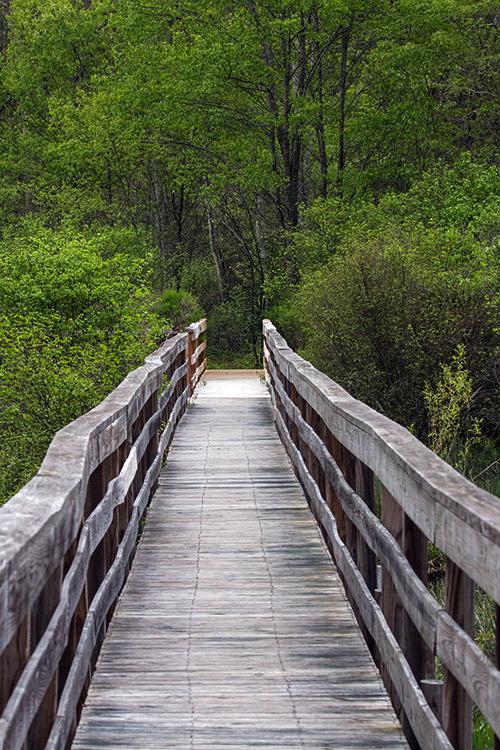
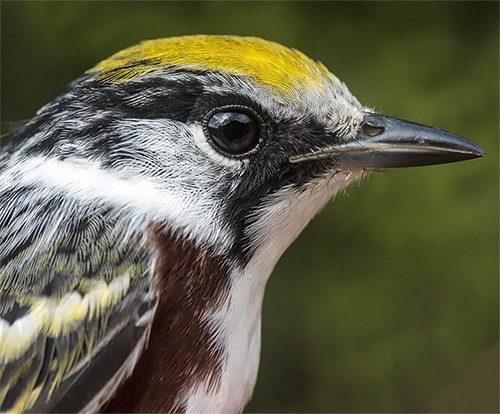











 Please report your
Please report your